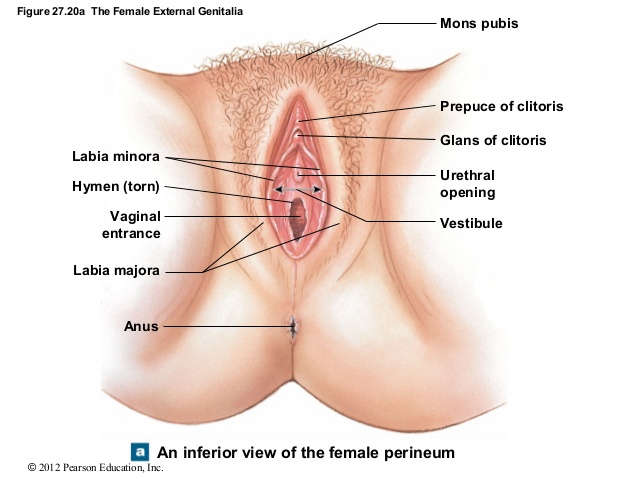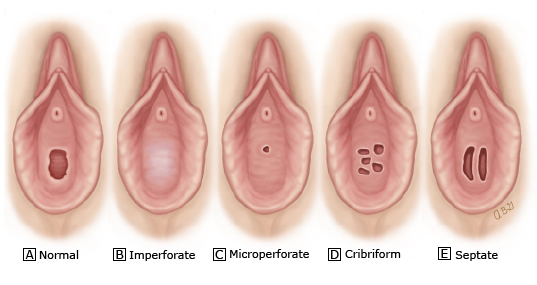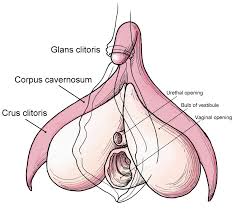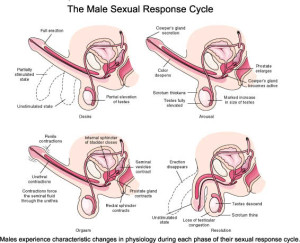 Contrary to what most of us grew up believing, the hymen is not a flat piece of skin covering the opening of the vagina only to be torn apart or punctured while having sex for the first time. If that were true, there would be no way for menstrual blood to exit the vagina during a period. For all its fabled mystery, the hymen is a body part like any other.
Contrary to what most of us grew up believing, the hymen is not a flat piece of skin covering the opening of the vagina only to be torn apart or punctured while having sex for the first time. If that were true, there would be no way for menstrual blood to exit the vagina during a period. For all its fabled mystery, the hymen is a body part like any other.
Having said that, hymens come in many shapes and sizes; some are thick and some are thin, some have tiny punctures while others are one singular hole, some look as if they have a series of tears in them, others look like they’ve been split down the middle, and some aren’t born with one at all. That’s just the beginning. Like all body parts, each hymen is unique to the person that owns it.
For those new to sex positive education, interested in learning about their body or the bodies of others, this post should cover everything you need to know about the hymen.
What does your hymen look like?
 If you’re curious about what your hymen looks like, following these steps should make the process much easier:
If you’re curious about what your hymen looks like, following these steps should make the process much easier:
What you’ll need: a mirror, preferably one that sits on a stand (if you can get one that magnifies, even better), a place you feel comfortable where you have some privacy, and a flashlight.
- Prop yourself up against something stable while sitting on the floor (a bed, wall, couch – something that wont shift) and spread your legs so that your comfortable and able to lean forward (this will allow you to look in the mirror closer if need be).
- Position the mirror between your legs so you have a full view of your genitals.
- Once comfortable, slowly spread the lips of your vulva (labia majora and minora) with one of your free hands.
- When looking keep in mind the hymen is usually located 1 – 2 cm inside the vaginal opening, not deep inside the vaginal canal.
If you find a thin layer of skin with a small hole (or holes) present, your hymen is most likely ‘intact’. If you notice small traces of broken skin surrounding your vaginal opening, you may have already stretched or broken your hymen.
Regardless of what you find it’s normal, natural, and nothing to be freaked out by. If you do happen to have any concerns try talking to a parent, trusted knowledgeable adult or friend, doctor, searching trusted sex education sites online, or reading informational sex ed books.
Below are examples of various hymens which can act as a guide to help you find yours.
Dispelling Common Hymen Myths
- Although it isn’t very common (about 1 in 200 people), some hymens cover the entire vaginal opening. This is usually detected at an early age, as it causes a constant abdominal pain, and usually requires surgical treatment. This type of hymen is called an “Imperforate hymen”.
- Contrary to popular belief a person can get pregnant even if the hymen is intact. As such I suggest you remember to use a form of birth control while having sex. *An intact hymen covers the entrance of the vagina, but does not seal it. There is still an opening to let the monthly cycle (period) escape the body, therefore sperm is still able to pass through.
- When the hymen tears, which may or may not happen, it can occur during exercise, tampon use, masturbation, or sexual activity.
- Most of the membrane is already worn away when a person finally has intercourse, and it plays little to no role in the discomfort they may experience.
- Bleeding the first time a person has sex does not necessarily mean that the hymen ‘broke’. Instead, bleeding during sex could be caused by tense vaginal muscles, a rushed entry, lack of lubrication, or abrasions inside the vaginal canal, among many other things. On that note, if a person doesn’t bleed the first time they have sex it doesn’t necessarily mean that the hymen did not tear.
- Hymens are elastic in nature and vary in their elasticity from one body to another, which means that the breakage process also differs.
Everything You Need To Know About The Hymen: Random Hymen Facts
- The name comes from the ancient Greek for “hymenaeus,” which means “vaginal-flap.” It was also the name for the Greek god of marriage, later also the Greek god of membranes; “Hymenaios.”
- Due to similar reproductive system development, many mammals, including chimpanzees, elephants, manatees, whales, and horses retain hymens.
- In the sixteenth and seventeenth centuries, medical researchers used the presence of the hymen, or lack thereof, as founding evidence of physical diseases such as “womb-fury” (hysteria). If not cured, womb-fury would, according to these early doctors, result in death.
As we all know knowledge is power, having accurate information about the hymen can help to normalize a persons fears about their body, sexuality, sexual experiences, and help promote greater self-confidence and acceptance.
Hopefully through watching the video your questions will be answered and you’ll gather some valuable insight about the hymen, along with changing your views on the perceptions associated with it.
Join my mailing list and stay up to date! Don’t worry, I promise not to spam you.






























